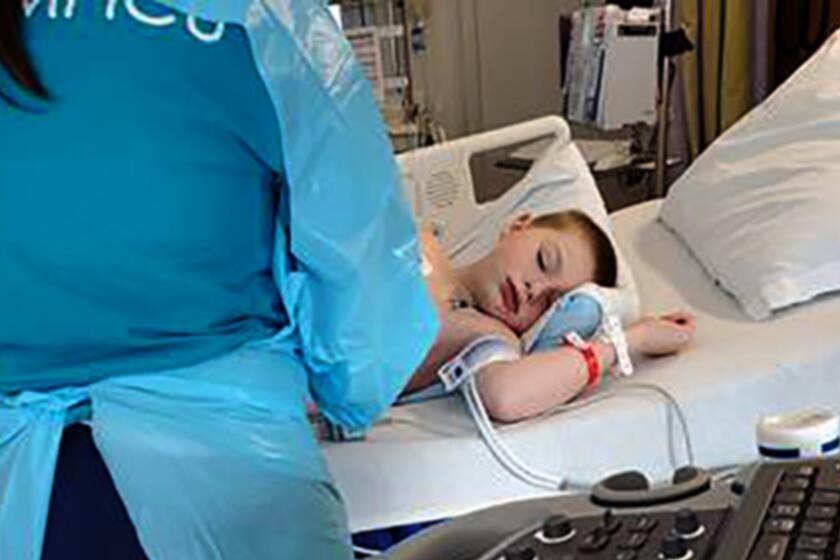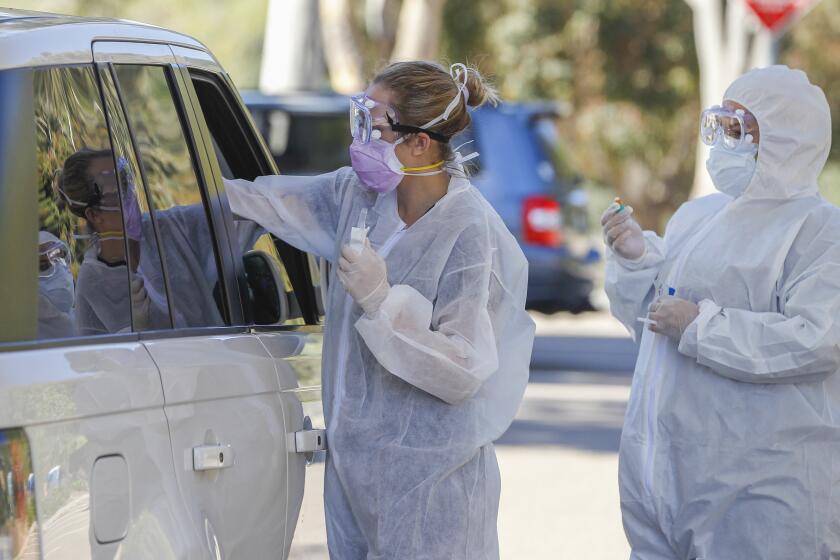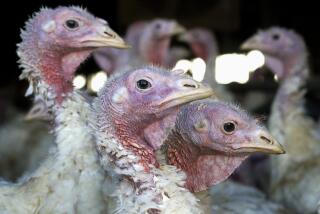A COVID-related illness is sickening a growing number of children in California
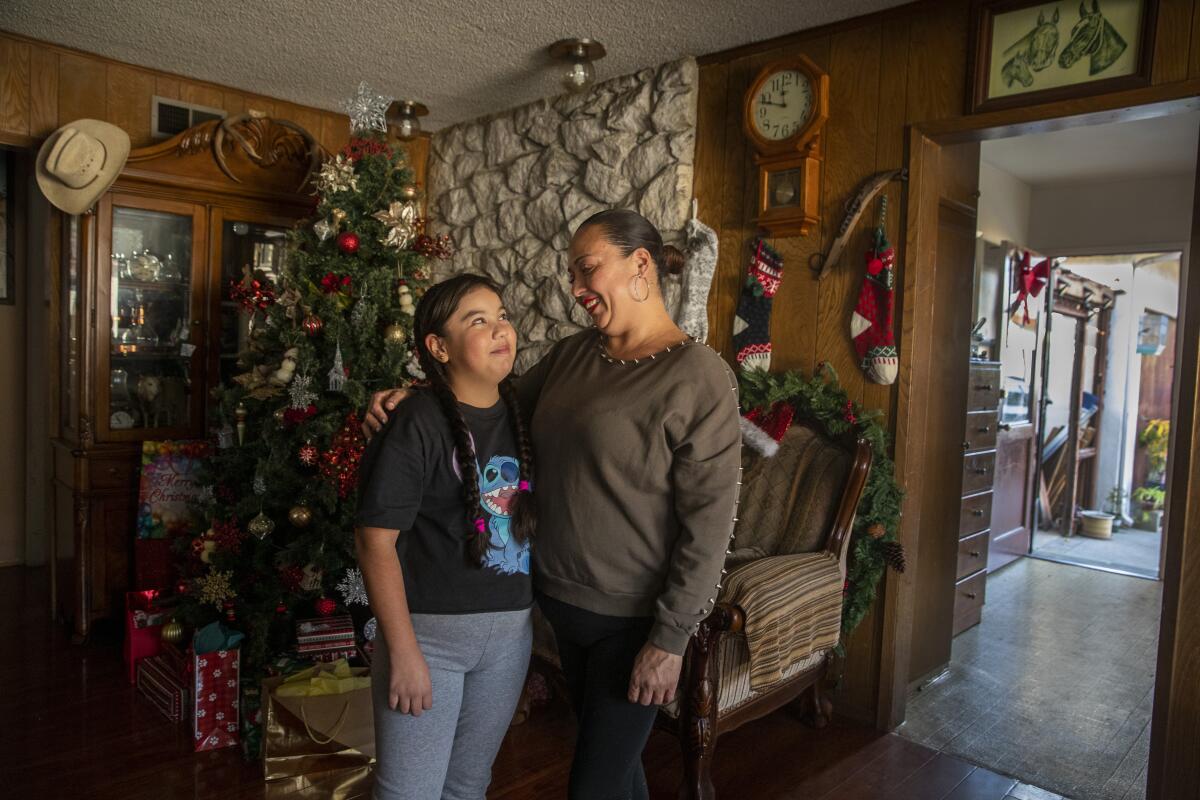
- Share via
For several seconds, 8-year-old Xitlali Vasquez’s heart stopped beating.
The girl’s parents had driven her to Children’s Hospital Los Angeles in May when her temperature spiked and delirium sent her into a fever-sleep. She was placed in intensive care as specialists tended to inflammation around her heart and arteries.
Her mother watched helplessly from the hallway as doctors rushed to revive her youngest child. It would be a few more days before the girl regained full consciousness and even longer before she was allowed to return to their Hawthorne home.
“It was just like a nightmare,” Rosa Vasquez said about her daughter’s 12-day hospitalization. “There was a time where I thought she was going to die.”
Xitlali, which means “star” in Nahuatl, was one of the first children in Los Angeles County to be diagnosed with multisystem inflammatory syndrome, a rare and potentially deadly illness known as MIS-C that infects children exposed to the coronavirus.
Seven months later, at least 45 children in the county have been diagnosed with MIS-C, and one has died.
L.A. County is investigating cases of children diagnosed with a rare inflammatory disease who’ve also tested positive for COVID-19.
Like the coronavirus — which has infected more than 1.85 million people in California, the majority of whom are Black and Latino — MIS-C has also disproportionately infected Black and Latino children.
In Los Angeles County, Latino children like Xitlali account for 73% of reported cases, according to data from the public health department. And across the country, Latino children make up 40% of MIS-C cases. The second-largest group is Black children, who make up 36% of all cases, according to the most recent data from the Centers for Disease Control and Prevention.
The Mayo Clinic suggests that differences in access to healthcare and the possibility of genetic risks may play a factor in the disparity but says that further studies are needed to help determine why MIS-C affects Black and Latino children more often than others.
In Xitlali’s case, it’s possible the girl, who turned 9 in July, contracted the virus from her parents. Vasquez said that she and her husband were both ill in late March with what appeared to be COVID-19 symptoms. But the couple tested negative for the virus. Neither of their sons, ages 12 and 24, fell ill, nor did Vasquez’s 68-year-old mother.
Xitlali, who is often by her mother’s side, didn’t show signs of the coronavirus until weeks later, when her eyes turned bloodshot and a fever pushed the girl to the point of delirium.
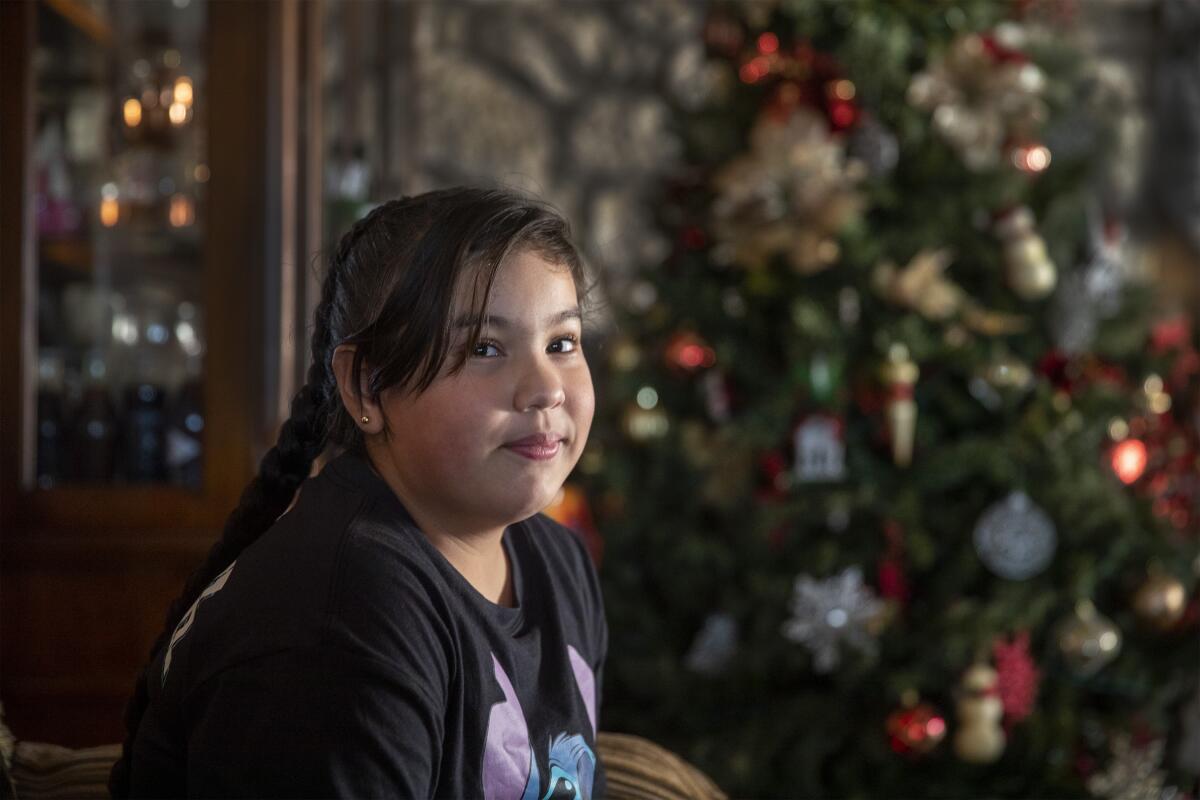
Much is still unknown about MIS-C, including its long-term effects, whether some children are genetically predisposed to the illness and if the case count may be higher. Researchers believe that some children diagnosed between January and May with Kawasaki disease, a rare inflammatory disease that affects about 5,500 children in the U.S. each year, might have actually had MIS-C instead.
What is clear is that MIS-C cases are directly linked to a surge in COVID-19 infections — a correlation that doctors say could easily match up with a likely uptick around the holidays, given the ongoing spike in coronavirus cases. In the last week, seven additional children have been diagnosed with the syndrome across the state, according to the California Department of Public Health.
“With the number of [coronavirus] cases we’re seeing in Los Angeles now, I do expect to see more children with MIS-C coming into the hospital in the next few weeks,” said Dr. Jackie Szmuszkovicz, a pediatric cardiologist at Children’s Hospital Los Angeles and one of Xitlali’s doctors. “We’re at a critical moment right now.”
The mysterious syndrome has killed at least 23 children in the U.S. and infected more than 1,280 — counts that have grown by more than 125% since July, according to a Times analysis of data from the CDC. The data were last reported Dec. 4 and will be updated next in January, the CDC said.
MIS-C has been diagnosed in patients less than a year old and up to age 20; the majority are 7 to 9.
In California, at least 152 children have fallen ill with MIS-C, according to the state Department of Public Health.
One child, whose age and name have not been released, died of the illness this month. Health officials at Children’s Hospital Los Angeles, where the patient was being treated, said the child had a “complex, preexisting cardiac condition” and died of complications tied to MIS-C. The death marks the first child fatality linked to COVID-19 in the county.
The state’s health department does not separate MIS-C deaths from COVID-19 fatalities. Among California’s more than 22,000 COVID-19 deaths, three have been children 17 or younger, state data show.
Doctors have recently identified a condition called pediatric inflammatory multi-system syndrome among children who have tested positive for antibodies against COVID-19.
While the syndrome is rare, it can be serious — and potentially deadly. Typically, children develop symptoms of MIS-C roughly four to five weeks after exposure to the coronavirus, which often goes undetected because most children are asymptomatic carriers. MIS-C symptoms include fever, pain in the abdomen and neck, vomiting, diarrhea, rash, red lips, bloodshot eyes and exhaustion.
Children have arrived at the hospital with a fever and have been discharged only to return days later in shock, doctors say. Others have been admitted with labored breathing and have to be given oxygen or placed on a ventilator. A MIS-C diagnosis usually is made only after a child tests positive for COVID-19 antibodies.
“There are kids that are not sick enough to be admitted. Then there are children that go directly into shock with multi-organ failure,” said Dr. Jane Burns, a professor and director of the Kawasaki Disease Research Center at UC San Diego. “We don’t understand why the heart muscles basically pump poorly in these children, but that can be reversed very quickly with the right cocktail of inflammatory treatment. They can go from death’s doorstep in one day.”
A CDC report from August said that obesity was the most commonly reported underlying medical condition among children with MIS-C. However, two-thirds of the children diagnosed at that time did not have preexisting conditions, the report showed.
Vasquez said that Xitlali had been given a clean bill of health at her checkup in January. After her bout with MIS-C, she has developed Type 1 diabetes, which Vasquez thinks is in part because of an inflammation in her pancreas related to MIS-C.
Health experts say early treatment is key to mitigating the severity of MIS-C. A combination of limited information about the illness, avoidance of hospitals and doctor’s offices amid the pandemic and the fact that initial symptoms often present in the GI tract — similar to the flu — has left some children in the emergency room after mild symptoms turn severe.
“Please do not delay in seeking care for your child if they are ill,” Szmuszkovicz said. “Length of stay is going to be shorter if we can get inflammation under control earlier.”
Vasquez, who still shudders at the memory of that May day as doctors worked frantically to restart Xitlali’s heart, knows all too well how quickly things can take a turn for the worse.
“Our kids get sick and we want to treat them with home remedies and Tylenol without knowing that they could die without taking them to the right place,” she said.
Recently, Xitlali turned to her mother as a news report blared on the television.
“There was a little kid that died because of the same thing that I had,” she told her mother in disbelief.
Fear persists for the young girl. But she is alive. And for that, her mother is grateful.
More to Read
Sign up for Essential California
The most important California stories and recommendations in your inbox every morning.
You may occasionally receive promotional content from the Los Angeles Times.
